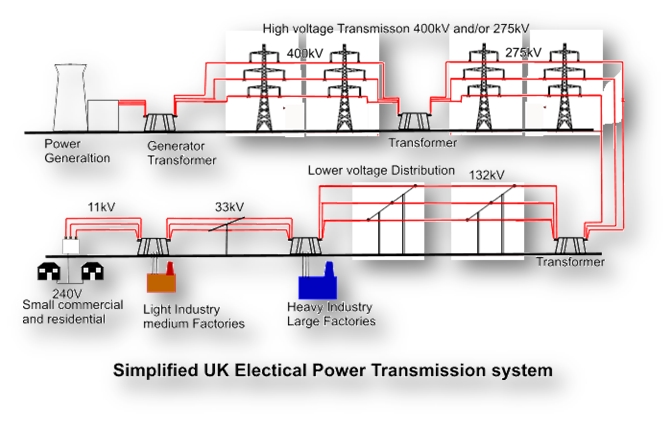Home › Electrical Engineering Forum › General Discussion › Importance of voltage criteria for consumer distribution system
- This topic has 1 reply, 2 voices, and was last updated 9 years, 2 months ago by
Anonymous.
-
AuthorPosts
-
2015/11/17 at 10:37 am #11281
admin
KeymasterYesterday Martin M. sent us this article and we thought it was quite interesting, so we’re sharing it with you.
Remember you too can send us your articles, just send us a mail.
A distribution system is deemed a failure if it does not meet the electrical demands of the consumers, as well as ensure safety while at it. Do note that the consumer end of the service is composed of thousands of small equipment and tools. While engineering at this level is virtually impossible, the power distributor can set a range of criteria that ensures both adequate power provision and safety.
Voltage criteria should clearly define the range and limits of the provided service, and maintenance of the operating voltage delivered to the consumer within that range.
Customer Voltage Requirements
Power delivery is the chief purpose of the distribution system. The delivery by itself is not sufficient: the customer should be able to use the delivered power safely, and with minimal transformation or conversion.
The delivered power should be stable in the sense that it should be within a pre-set limit. The range of the “usable” voltage for residential consumers varies according to regional standards—America has a nominal usable range of 110V, and 230 to 250V for Europe.
The appliance and electrical equipment manufacturers and suppliers in each region should then design their devices around the figures. However, though the power supplier provides a nominal delivery, usually minus or plus 5% of the usable voltage, it is recommended that you do not operate at the extreme ranges of the indicated equipment rating.
Most of the electrical equipment are designed to function within between 5-10% of the designated voltage. However, when operating between tolerable and maximum ranges, there are high chances of failure. Fluctuations between the two limits lead to detrimental performance, for example, bulb illumination changes leading to failure, while devices such as DVDs tend to reset.
With this in mind, the power supplier should ensure the service level voltage is within the stated nominal range, to ensure optimised performance based on the equipment manufacturers settings and designs.
Equipment and Tools Guidelines
The stated voltage limit and range enables engineers, planners and other personnel on the ground to make equipment selection, and initiate various processes and services.
Almost all tools and equipment have a specified operation range, which corresponds to the region of use, save for some conductors. With this in mind, component selection, for example, transformers, insulators, breakers, capacitors and others for industries is done with that specified range in mind. A set voltage criteria thus ensures that each component performs the intended function efficiently.
Although some of this equipment has settings and compensators to accommodate any changes in the delivered voltage, the installed distribution system should be designed to respect the initially stated voltage on the onset.
While voltage criteria are designed to ensure supply of an operating voltage within a clearly defined ad pre-set limits to the consumers, it does offer benefits to the utility power itself. The limits allow them to institute measures that accommodate the various specifics of power. Do note that the distribution planners should primarily use the data for distribution planning.
The set voltage criterion for the consumer thus allows planners and engineers to account for situations such as voltage drops along the service lines and compensate using the appropriate methods and components for any known and unknown factors.
In many cases, the power supply engineers record and document the range and frequency of deviation from the set limits in the grid, for example, in a particular substation, and then pursue the necessary changes in the system.
Martin M.
2015/12/24 at 5:56 am #13701Anonymous
GuestThank you for sharing useful information
-
AuthorPosts
- You must be logged in to reply to this topic.

